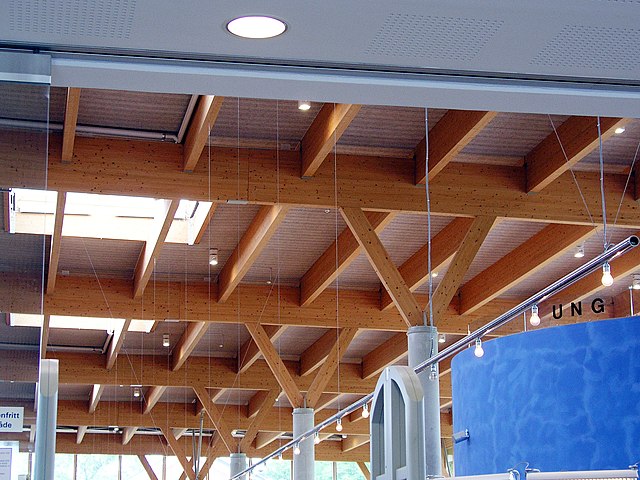Thatching is the craft of building a roof with dry vegetation such as straw, water reed, sedge, rushes, heather, or palm branches, layering the vegetation so as to shed water away from the inner roof. Since the bulk of the vegetation stays dry and is densely packed—trapping air—thatching also functions as insulation. It is a very old roofing method and has been used in both tropical and temperate climates. Thatch is still employed by builders in developing countries, usually with low-cost local vegetation. By contrast, in some developed countries it is the choice of some affluent people who desire a rustic look for their home, would like a more ecologically friendly roof, or who have purchased an originally thatched abode.
A thatched pub (The Williams Arms) at Wrafton, North Devon, England
Inside view of an Inca roof in one of the few reconstructed buildings of Machu Picchu
The multi-tiered Meru towers of the Besakih temple in Bali are thatched with black ijuk fibres.
Thatch works on a house in Mecklenburg, Germany
A roof is the top covering of a building, including all materials and constructions necessary to support it on the walls of the building or on uprights, providing protection against rain, snow, sunlight, extremes of temperature, and wind. A roof is part of the building envelope.
Terminology of some roof parts
The roof of a library in Sweden
Roofs in the central of Ystad 2022.
Slate, Jersey








